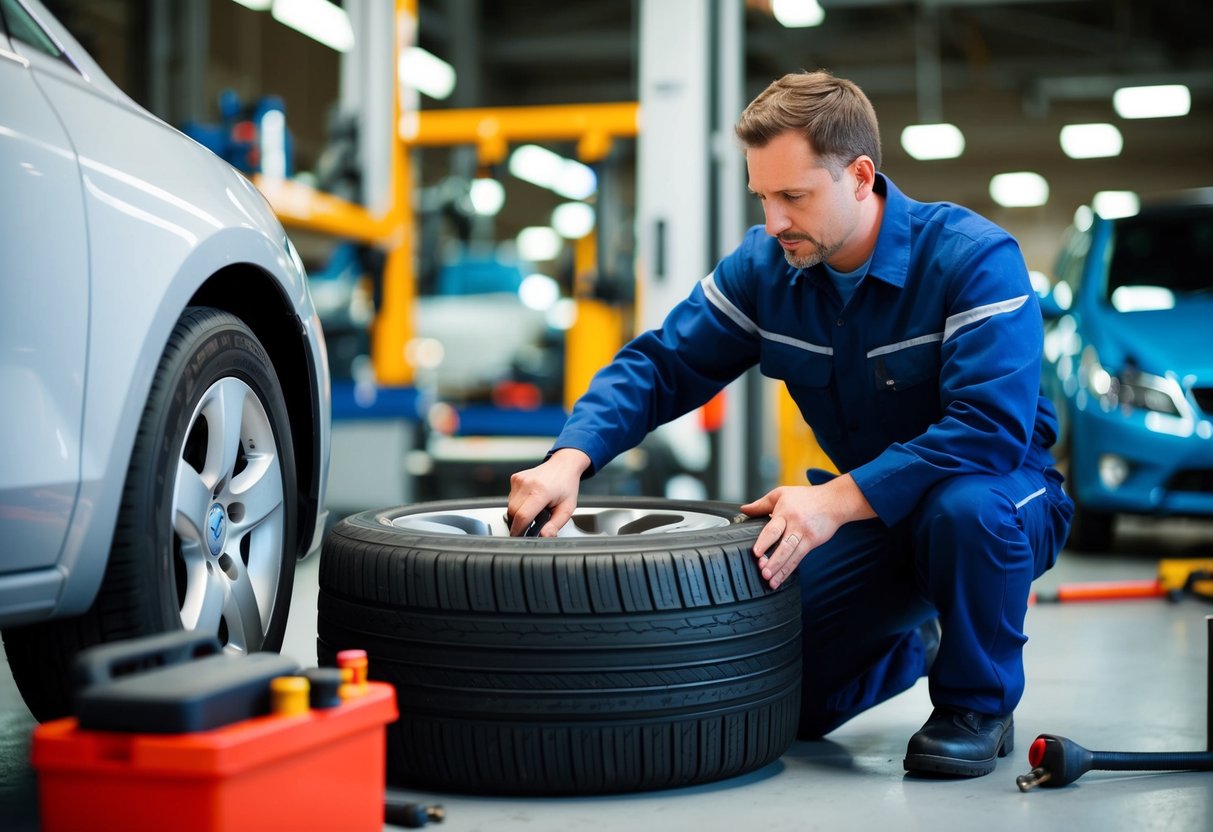
Tire Maintenance and Replacement

Proper care for tires plays a crucial role in ensuring vehicle safety and enhancing the overall performance of a car. Regular inspections and timely replacements can prevent accidents and improve fuel efficiency.
Regular Tire Inspection
Routine inspections of tires are a vital aspect of car maintenance. Tire pressure should be checked monthly, as incorrect pressure can lead to premature wear and decreased fuel efficiency. Drivers should inspect for visible signs of damage such as cuts, punctures, and uneven wear patterns that might indicate misalignment or suspension issues.
Tread depth is another critical factor to consider. Tires should have a minimum tread depth of 2/32 of an inch to ensure adequate traction, especially on wet roads. A tread depth gauge can provide precise measurements. While doing visual inspections, it’s recommended to look for embedded foreign objects that could cause slow leaks.
Knowing When to Replace Tires
Tires typically need replacement every 25,000 to 50,000 miles, based on driving conditions and quality. Age is also a significant factor; tires older than six years should be replaced, regardless of mileage. Another indicator for replacement is visible tread wear bars that appear when the tread is worn down.
Apart from standard wear, tires exposed to extreme temperatures or improper storage can deteriorate faster. Drivers should be aware of any unusual vibrations while driving, as they might signal tire damage or imbalance. Maintaining awareness of these factors ensures timely replacement, which contributes to longer vehicle life and improved safety.
Battery Care and Maintenance
Proper battery maintenance is crucial for ensuring a reliable vehicle. Regularly checking the battery can prevent unexpected breakdowns and extend its lifespan. Employing techniques to maximize battery life can lead to more efficient car maintenance.
Routine Battery Checks
Routine battery checks are essential to avoid inconvenient car troubles. Regular inspections, including looking for corrosion on terminals, can significantly impact your vehicle’s performance. Corrosion appears as a white or bluish powder and should be cleaned carefully. Checking for secure terminal connections reduces the risk of starting issues.
Monitoring the battery’s charge level is another vital part of regular checks. Many modern vehicles have built-in battery indicators that can give a quick status update. If the vehicle doesn’t have this feature, a multimeter can be used. Batteries should be checked more frequently in extreme temperatures to ensure they maintain an appropriate charge.
Careful visual inspections and using the appropriate tools during routine checks can help maintain a car’s reliability. Regular maintenance not only helps in avoiding unexpected breakdowns but also supports the overall performance.
Maximizing Battery Life
Maximizing battery life involves more than just regular inspections. Keeping the vehicle free from electronic drains when not in use is crucial. Devices such as interior lights, GPS, or phone chargers should be turned off when the engine is not running. This prevents unnecessary battery drainage and extends its lifespan.
Consistent driving habits also play a significant role in battery longevity. Short and frequent trips can prevent the battery from fully recharging. Regular longer drives allow the alternator to properly charge the battery, maintaining its health over time. Parking in shaded areas during hot weather and protecting the battery from extreme cold can further preserve its life.
These practices can contribute to sustained battery health, reducing the need for premature replacements. Maintaining the battery is a small but vital aspect of comprehensive car maintenance.